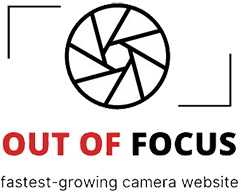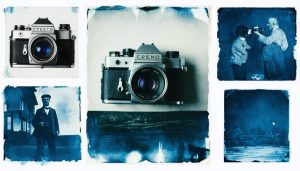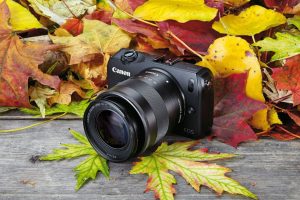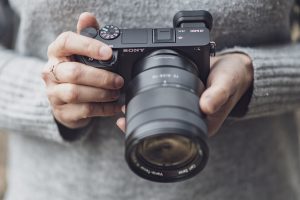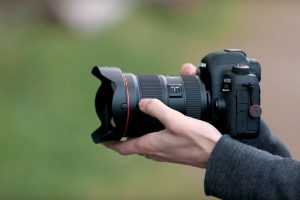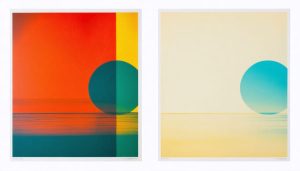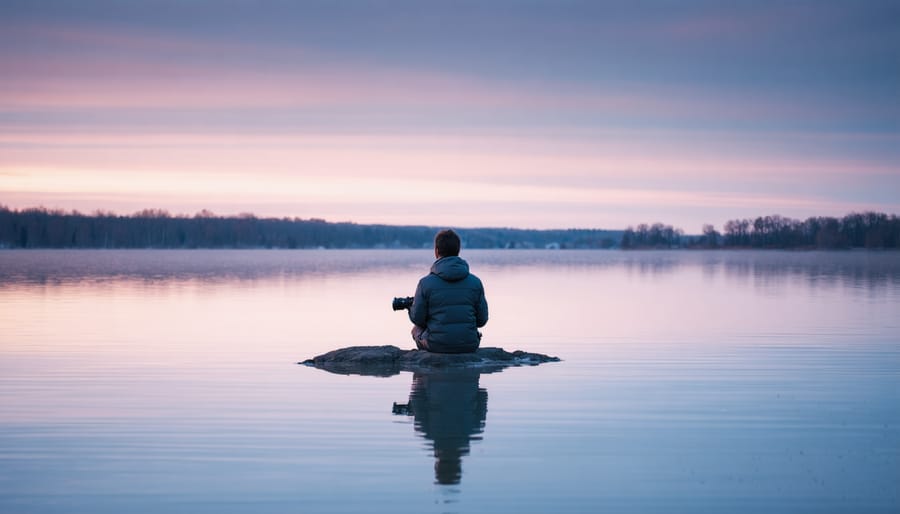
Breathe deeply before pressing the shutter, allowing your mind to clear and connect with the present moment. Photography becomes meditation when we release expectations and simply observe how light dances across surfaces, how shadows create depth, and how compositions naturally emerge. Enhancing your creative vision through Zen practices transforms ordinary scenes into extraordinary images, revealing hidden beauty in the mundane.
The intersection of Zen philosophy and photography offers a profound path to visual mastery. Rather than chasing perfect technical settings or following rigid composition rules, embrace imperfection and spontaneity. Let your camera become an extension of your consciousness, responding intuitively to the world around you. This mindful approach strips away preconceptions, allowing authentic moments to unfold naturally before your lens.
Master photographers throughout history have recognized this intimate connection between inner stillness and compelling imagery. By cultivating presence and patience, we learn to see beyond the obvious, capturing not just what things look like, but how they feel. This marriage of Zen principles with photographic practice opens new dimensions of creativity, leading to images that resonate with genuine emotion and depth.
The Mindful Photographer’s Path
Present Moment Awareness
In photography, our greatest ally is the present moment. When we fully immerse ourselves in the now, we begin to see the world through fresh eyes, unclouded by preconceptions or technical checklists. This state of present moment awareness is what distinguishes memorable photographs from mere snapshots.
Consider walking through a busy street. Most people rush past, their minds occupied with destinations and deadlines. But as a photographer practicing presence, you notice the interplay of light and shadow on weathered walls, the fleeting expressions on passersby’s faces, or the geometric patterns formed by urban architecture. These subtle details often create the most compelling images.
Being present also helps you develop what Henri Cartier-Bresson called “the decisive moment” – that split second when all elements align perfectly. Instead of constantly checking your camera settings or wondering about your next shot, presence allows you to tune into the natural rhythm of your environment.
To cultivate this awareness, try this simple exercise: Before raising your camera, take three conscious breaths. Feel your feet on the ground. Notice the quality of light, the sounds around you, and the emotions the scene evokes. This brief pause helps quiet the analytical mind and awakens your intuitive photographic eye.
Remember, technical perfection means little without the ability to truly see. Present moment awareness transforms photography from a mere mechanical process into a form of visual meditation, where each frame becomes an expression of genuine connection with your subject.
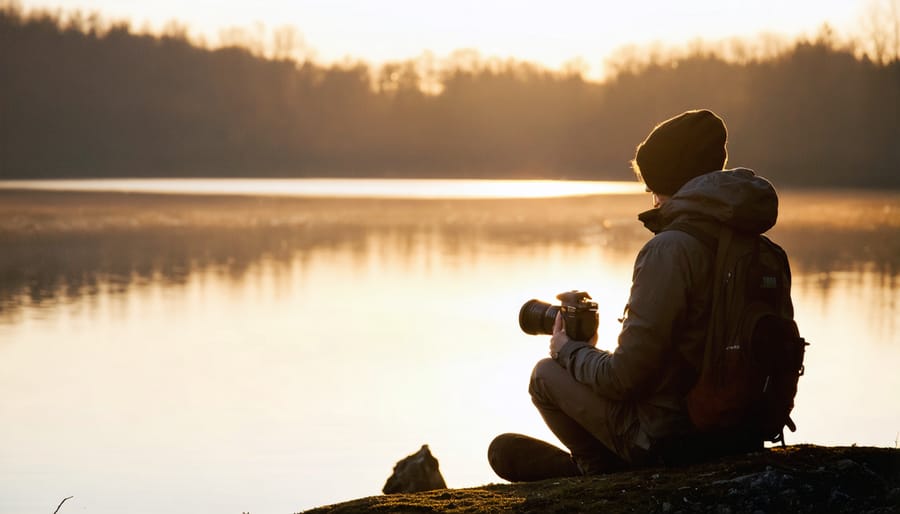
Empty Mind, Full Frame
In photography, a cluttered mind often leads to cluttered compositions. The practice of emptying your mind while shooting isn’t about achieving complete mental silence – it’s about creating space for your creative intuition to emerge naturally.
Start by taking three deep breaths before raising your camera to your eye. This simple ritual helps transition you from thinking mode to seeing mode. Notice how your awareness expands beyond the viewfinder to include peripheral elements and potential compositions you might have missed while lost in thought.
When you find yourself overthinking technical settings or composition rules, pause. Acknowledge these thoughts without judgment, then gently return your attention to what’s in front of you. Much like meditation, this becomes easier with practice.
Try this exercise: Spend the first 10 minutes of your shoot without taking any photos. Simply observe your surroundings, the quality of light, the movement of subjects, and the relationships between elements in your environment. When you do begin shooting, maintain this quality of presence.
Remember that your camera settings should be second nature through practice, allowing your conscious mind to focus solely on the scene unfolding before you. If you find yourself getting frustrated or stuck, lower your camera and reset with a few mindful breaths.
The goal isn’t perfection but presence. When you shoot with an empty mind, you’re more likely to capture authentic moments and create images that resonate with genuine emotion rather than forced concepts.
Seeing Without Looking
The Art of Patient Observation
In the practice of mindful photography, developing visual awareness begins with the simple act of slowing down and truly seeing what’s in front of you. Much like meditation, patient observation requires us to quiet the mental chatter and become fully present in the moment.
Start by choosing a single location and commit to spending at least 15 minutes there without taking a single photograph. Notice how the light plays across surfaces, how shadows create depth, and how shapes interact with one another. Pay attention to the subtle details that might typically escape your attention – the texture of tree bark, the geometric patterns in architecture, or the way leaves dance in the breeze.
As you practice this technique, you’ll begin to notice that your perception shifts. What initially seemed ordinary starts to reveal its extraordinary qualities. This is where the Zen aspect of photography truly emerges: in the ability to see beauty in the mundane and significance in the overlooked.
Try this exercise: Before reaching for your camera, take three deep breaths and scan your environment slowly, from ground to sky. What catches your eye first? What draws your attention after a few minutes of observation? Often, the most compelling compositions reveal themselves not in our first glance, but in our patient exploration of a scene.
Remember, the goal isn’t to find the perfect shot immediately, but to develop a deeper connection with your subject matter. This mindful approach often leads to more meaningful and intentional photographs that resonate with viewers on a deeper level.
Finding Flow in Photography
In photography, reaching that elusive state of creative flow happens when technical skills become second nature, and you’re fully immersed in the present moment. It’s that magical space where time seems to dissolve, and creating images feels effortless and natural.
To cultivate this flow state, start by mastering your camera’s fundamentals until adjusting settings becomes intuitive. When you’re no longer thinking about f-stops and shutter speeds, your mind is free to focus purely on composition and light. Think of it like driving a car – at first, you’re conscious of every gear shift and mirror check, but eventually, these actions become automatic.
Practice mindful observation before even raising your camera. Notice how light plays across surfaces, how shadows create depth, and how shapes interact. This preparatory phase helps quiet the analytical mind and awakens your artistic instincts.
When shooting, breathe deeply and move slowly. Rather than rushing to capture every possible shot, wait for moments to unfold naturally. Allow your intuition to guide your compositions. If you feel yourself becoming tense or frustrated, pause and reset.
Remember that finding flow isn’t about forcing creativity – it’s about creating space for it to emerge naturally. Some days, it might come easily; others, it may feel more distant. Accept these fluctuations as part of the creative journey. The key is maintaining a balance between technical awareness and artistic spontaneity, letting your camera become an extension of your vision rather than a barrier to it.
Simplicity in Practice
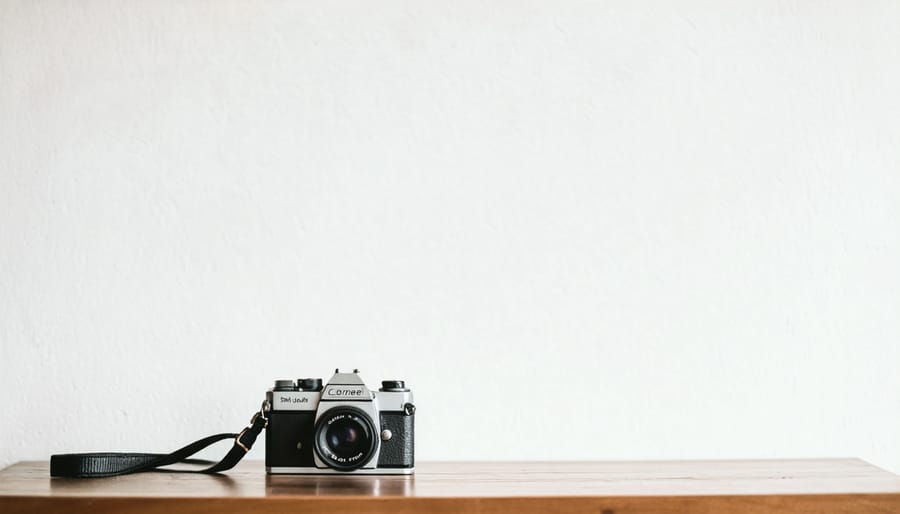
One Camera, One Lens
In the pursuit of zen photography, there’s profound wisdom in embracing the “one camera, one lens” philosophy. By limiting yourself to a single camera body and lens, you strip away the distractions of endless gear choices and focus entirely on the creative process.
Think of it as decluttering your photographic practice. When you’re not constantly switching between different lenses or debating which camera to bring, your mind becomes free to concentrate on composition, lighting, and the decisive moment. Many master photographers, including Henri Cartier-Bresson, were known for using minimal equipment, often just a Leica and a 50mm lens.
This approach forces you to move physically to frame your shots rather than relying on zoom lenses. You’ll develop a deeper understanding of your equipment’s capabilities and limitations, eventually making it feel like a natural extension of your vision. The constraints actually enhance creativity by challenging you to find innovative solutions within your limitations.
Working with one camera and lens also helps develop consistency in your work. You’ll learn to see the world through a specific focal length, anticipating compositions before even raising the camera to your eye. This intimate familiarity with your gear creates a seamless connection between thought and action, embodying the zen concept of being fully present in the moment.
For beginners, this approach simplifies the learning process, allowing you to master one set of tools before expanding your kit. For experienced photographers, it’s a refreshing return to basics that can reignite creative passion and bring mindfulness back to their practice.
The Power of Negative Space
In Zen philosophy, emptiness isn’t just absence – it’s a powerful presence that gives meaning to everything around it. This same principle applies beautifully to photography, where negative space can create stronger compositions and evoke profound emotional responses.
Think of negative space as the visual breathing room in your photograph. It’s the uncluttered areas that surround your subject, whether it’s a vast expanse of sky behind a solitary tree, or the smooth, empty wall beside a contemplative portrait. These spaces aren’t empty at all – they’re working hard to direct attention, create balance, and establish mood.
When incorporating negative space effectively, start by identifying your main subject and considering how the empty areas around it can enhance its impact. A small bird against an endless blue sky tells a different story than the same bird surrounded by busy branches. The emptiness amplifies the subject’s presence, making it more powerful through contrast.
Remember these practical tips when working with negative space:
– Look for clean backgrounds that complement your subject
– Pay attention to the edges of your frame
– Experiment with different subject-to-space ratios
– Use minimalist compositions to create emotional impact
– Consider how empty space guides the viewer’s eye
The beauty of negative space lies in its ability to transform simple scenes into compelling visual stories. Like the white space between words on a page, it gives your photographs rhythm and allows your subjects to breathe. It’s a reminder that in photography, as in Zen, sometimes less truly is more.
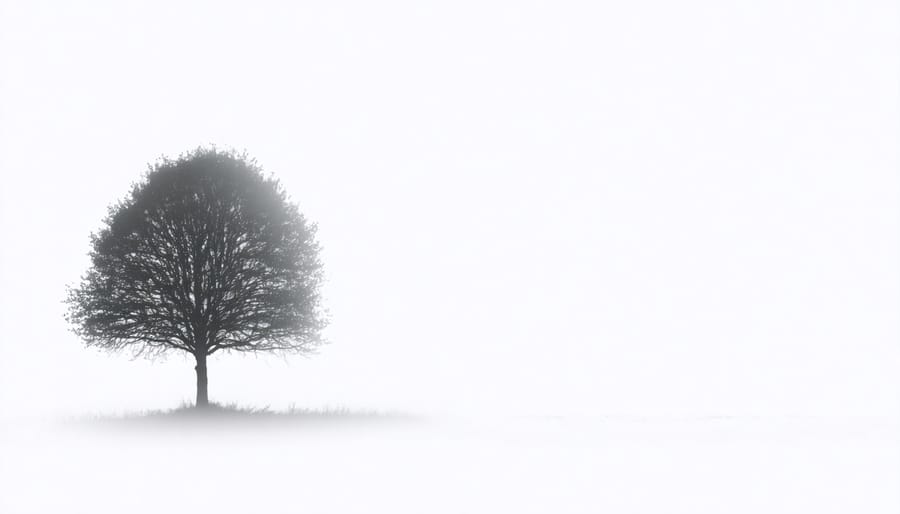
Embracing Imperfection
In the world of photography, we often strive for technical perfection – tack-sharp focus, perfect exposure, and precise composition. However, the Zen approach to photography encourages us to find beauty in imperfection, much like the Japanese concept of wabi-sabi. This acceptance of flaws can lead to more authentic and emotionally resonant images.
Consider the slight motion blur in a street photograph that captures the energy of a bustling city, or the deliberate use of grain that adds texture and mood to a portrait. These “imperfections” often contribute to the story rather than detract from it. By embracing these elements, we free ourselves from the constraints of technical perfectionism and open our minds to new creative possibilities.
Even great photographers occasionally capture images that are technically imperfect but emotionally perfect. Think of the slightly out-of-focus moments that still manage to convey powerful emotions, or the unexpected light leaks that add a dreamy quality to an otherwise ordinary scene.
To practice embracing imperfection, try shooting without checking your LCD screen immediately after each shot. Allow yourself to be present in the moment rather than scrutinizing technical details. Experiment with intentionally breaking traditional photography rules. Sometimes, the most compelling images arise from these “mistakes” – they become unique expressions of your artistic vision rather than technical shortcomings.
In the journey of combining Zen principles with photography, we discover that the true essence lies not in achieving perfect technical mastery, but in developing a deeper connection with our subject matter and ourselves. By embracing mindfulness in our photographic practice, we learn to see beyond the obvious, finding beauty in simplicity and meaning in the ordinary moments that surround us.
The integration of Zen philosophy into photography isn’t just about creating better images—it’s about transforming how we experience the world through our lens. When we release our attachment to outcomes and focus instead on the present moment, our photography naturally becomes more authentic and meaningful. This mindful approach helps us move beyond the technical aspects of photography to capture the spirit of our subjects.
Remember that this is a continuous journey, not a destination. Some days, you’ll feel completely in tune with your environment and camera; other times, you might struggle to find that connection. Both experiences are equally valuable parts of the process. The key is to maintain your practice with patience and persistence, allowing your photographic eye to develop naturally alongside your spiritual awareness.
As you continue your photographic practice, let the principles of Zen guide you: simplicity, mindfulness, and presence. Whether you’re photographing landscapes, portraits, or street scenes, approach each moment with an open mind and a quiet heart. In doing so, you’ll not only create more meaningful images but also discover a more profound way of seeing and being in the world.
